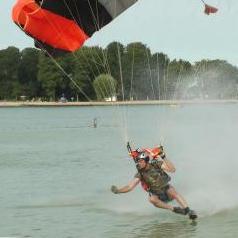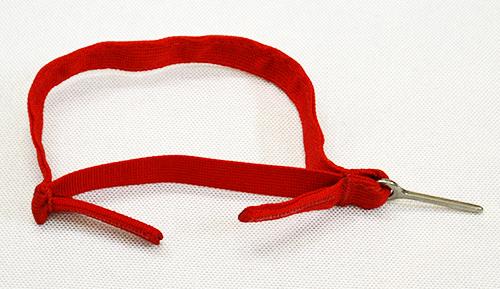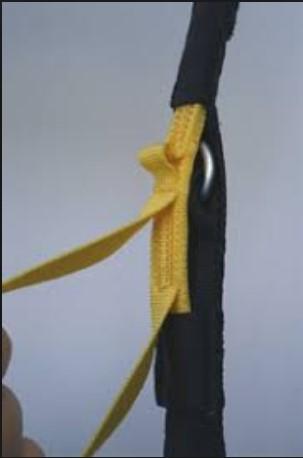-
Content
233 -
Joined
-
Last visited
-
Feedback
0%
Posts posted by Cloggy
-
-
C182 + Dolphin: Sander K. is the man to talk to.
-
 1
1
-
-
Peter, thanks for posting that, it is the same file I have.
I somehow assumed I couldn't attach any files in the forum...brainlock...
-
Drop me a PM and I'll mail what I have.
Bart -
P/N 11-1-4252-1 Locking loop assembly.
-
11 hours ago, KBUDA said:You can also route your chest strap this way: https://www.dropzone.com/forums/topic/263720-chest-strap-quick-release-routing-/?do=findComment&comment=4594717
OP wrote: "We aren’t allowed to use quick release routing of the standard buckle at our drop zone"
-
That's right, the Techno is made by Parachutes de France.
1.5 wingload would be exceeding the TSO for any size of Techno.
I jumped my Techno 155 twice at wingload 1.4, which is a bit above the recommended wingload. I found it an easy and responsive canopy to fly and land; no problems with flaring. -
I've hundreds of jumps with the thing, but for the life of me I can't remember if it switches automatically between screens at 1000ft or not.
Mine is usually on the main screen on the ride up, changing betweens screens can be done manually by pushing the button bottom right.
After detecting exit the Neptune will go to altitude display automatically.
-
Hi Larry, a few years ago I got a PC Mk1. I didn't want to jump the old Minisystem harness and Kohnke reserve that came with it.
I put the PC on 3-ring risers, made a deployment bag for it (with a lot of info and help here on the forum) and regularly jump it with a modern student rig.
Bart -
I think these are called Koch fittings
-
I jump a Sabre2 170 at a wingload of 1.3.
I replaced the lines at 650 jumps. Not because they were worn: the lines were still in very good condition. Seems they could have lasted until 1000 jumps or more.
I replaced them because the trim was way off: the outer lines had shrunk by as much as 6 inches.
The canopy was still opening, flying and flaring fine, no strange behaviour, but flying characteristics were noticably different after 150~200 jumps. It was getting more difficult to fly on the front risers, after struggling with that for the last few hundred jumps I finally got fed up with that.After relining the changes were not dramatic, but I feel the canopy is flying 'cleaner'. I chose Vectran, it won't last as long as Spectra, but at least the trim will not change much.
What Lee says about the brake lines is a good point: I had mine replaced early on as they had shrunk by about a foot...
You say you didn't notice "any change in openings, flight / flare". Maybe because the changes are gradual and, with your jump numbers, spread out over many years?
Anyway, if the lines are still good and you're happy with the way it's flying now, it doesn't really seem necessary to replace the lines? I guess best thing would be to ask a rigger for a second opinion. -
-
8 hours ago, Kocka said:I saw this before posting but i wasn't feel comfortable to practice it..
 … i newer saw anyone at dz doing it...
… i newer saw anyone at dz doing it...
 When I was the first at my DZ to start psychopacking it would draw a small crowd, looking at me as if I was completely mad and irresponsible (no comment...
When I was the first at my DZ to start psychopacking it would draw a small crowd, looking at me as if I was completely mad and irresponsible (no comment...  ).
).
Shaking their head and saying things like: "I will go sit outside and watch you pull your reserve". I never had any problems or malfunction with this packing method.
I don't think there is that much difference between psychopacking and propacking: first part is the same, then just a different way to put it in the bag. -
Just ordering a smaller slider in the hope it will fix your problems, are you serious?
I hope you did some more research than just 'reading' on the internet and did actually ask the people around you for advice?
-The packing could be the only thing you need to fix; review your packing technique with an experienced skydiver or have it packed by somebody else to compare openings.
-Did you discuss the slider size with a rigger or Icarus: how do you know this one is 'huge' or too large for your canopy? The manufacturer designs it to a particular size for a reason. And is the smaller slider appropriate for your canopy size and W/L? I bet a smaller slider opens faster, but you could be in for a painful surprise as well.
-
Disclaimer: I'm not a rigger, all is just my personal interpretation and opinion :-)
The pin in itself is not the whole solution.
The pin has a smaller profile (cross section) than a fabric tongue (nose).
Most other soft toggles seem to use 1" square weave. The PdeF toggles (and probably the SWS too) use 5/8" square weave: also lower profile when passing through the slider grommet.All in all, I'd think there is less chance that the slider grommet comes into contact with the pin or toggle.
The other part is the downward pointing tab immediately below the straight pin. This tab sits in the pocket on the riser below the guide ring, and prevents downward movement should the slider grommet come into contact with the pin or toggle. I tried to push the pin out of the keeper: very hard to do, even more so when there is any tension on the riser.
-
-
On 4/8/2019 at 1:59 PM, piisfish said:Parachutes de France toggles. Best, bar none. 1 pin up, 2 tabs down.
I fully agree. Never had any toggle fire with them.
About a year ago I started looking into velcroless designs to replace some velcro toggles. So far I didn't find anything that I liked better than the Parachute de France toggles. I think it's quite an elegant design: no bulky tongues with 6 layers of fabric. And I like the way 1 piece of binding tape is used to make up the two pockets and cover the hard housing as well: smart.
The design by ParachutesAustralia also seemed promising. -
-
Deleted: totally unrelevant to your question.
-
Seems there is already a lot of info on the forum: try a search for "HUD" -
How about getting some superstrong magnetic implants?

-
ChrisHoward***I have a wings and i leave the dbag in with the lines toward the back of the container which seems the most logical to me, but I often see people roll it down toward the bottom and have yet to get a reason why
The best reason I was ever given is that on deployment the PC twists the bag into the upright position, breaking the friction of the bag vs container, then begins lifting the bag out of the pack tray. If the bag starts out in an up right position the PC has to break that friction and lift the bag in 1 motion which is obviously more effort for the PC (think shearing forces vs pealing forces). Sure people do it, and sure it works, but it can cause weird deployments in overly tight containers.
I see what you mean Chris, but wouldn't leverage be the major factor? When pulling straight out the pilot chute will have to overcome friction on both sides of the bag, when pivoting out only on one side. See attached diagram, assuming friction on the sides of the d-bag is the same in both cases.
Or is that too simplistic a thought, when considering the deformability and geometry of d-bag and container?
It shouldn't be too hard to measure the difference with a spring balance. -
Sorry melk and Peter, my bad and my apologies for total misunderstanding and confusion on my side

Got thrown off the track by what is back, bottom, front, up etc. and thought you were talking about putting the bridle attachment against the bottom flap and the lines against the reserve container. Hence upside down...
So I really apologize for messing up your thread and for thinking you were making it up on the go... nothing wrong with your attitude, au contraire.
(and I give myself a virtual kick in the behind )
) -
Let's keep it to your own container. (When you're packing for others, you should better be double sure you know what you're doing.)
I appreciate you're trying to find knowledge and to understand "why". What I don't get is that you change the procedure before understanding the reasons behind it, that is a dangerous attitude in this sport.
The manual is clear: "Lift the Main Deployment Bag over the container without twisting the lines and place into the Main Container with the lines towards the Bottom Flap of the container and the Bridle towards the Reserve container."
You read this, and you still go against the manufacturer because you think the other way around seems more logical, or nobody has given you a good reason yet why it is done this way? I can't imagine a rigger has suggested to you it is OK to put the bag upside down in the container.
Any rigger worth his salt should be able to explain to you why the D-bag is in the container this way. Go ask. -
Re 2 and 3: did you even read the Wings manual
 ?
?






MIRPS T10R
in Gear and Rigging
Facebook round canopy sale / wanted